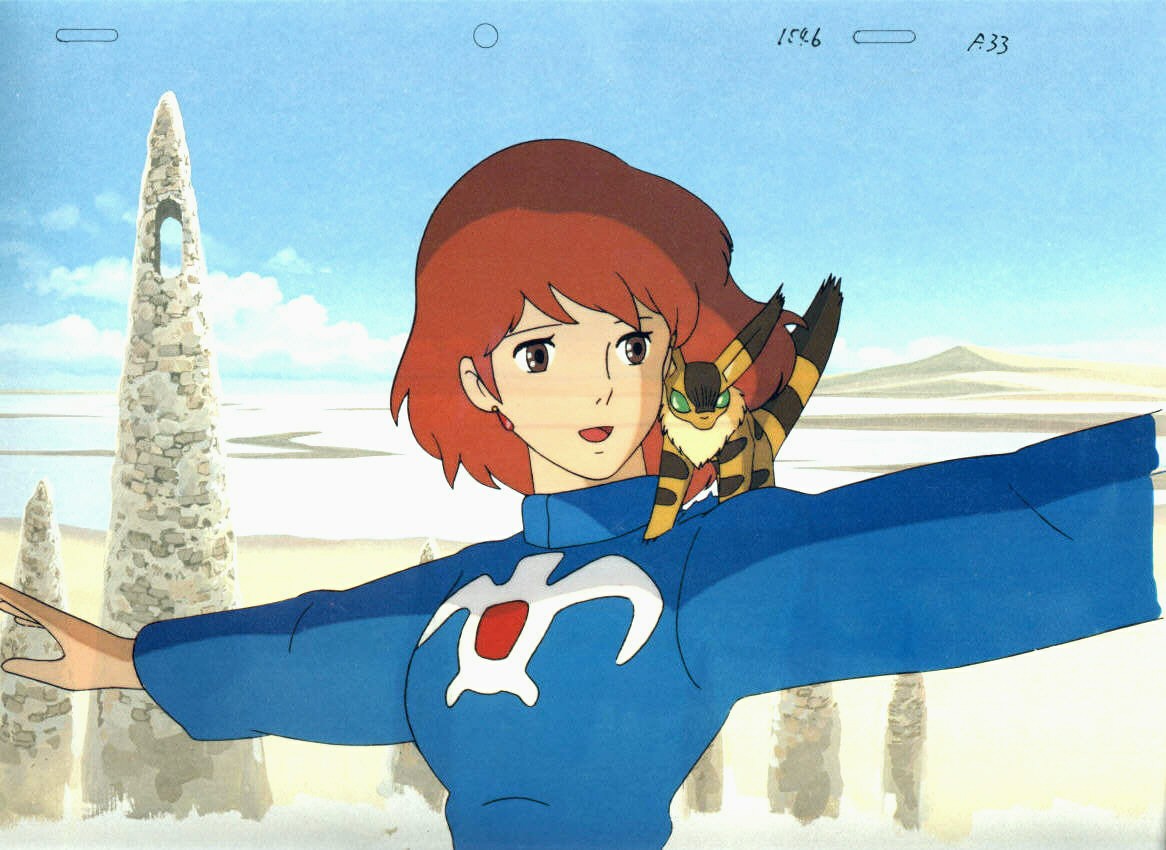 Nausicaä of the Valley of the Wind
Nausicaä of the Valley of the Wind Japan 1984
Director: Hayao Miyazaki
Screenwriter: Hayao Miyazaki
Runtime: 116 min
Certificate: PG
DVD Distributor: Optimum
My fascination for “mangas”, Japanese animés, goes back to my childhood, when French TV programmes for kids were dominated by Japanese cartoons featuring space pirates, mean robots, and nice little girls in love. I discovered the world of Miyazaki years later when the Glasgow Film Theatre put on a Studio Ghibli retrospective. The reason I chose it over Isao Takahata’s Grave of the Fireflies is that Nausicaä of the Valley of the Wind is a creation rather
than an adaptation, and Miyazaki’s imaginary world is so much more potent, complex, and original than most Japanese animé-makers’, without even mentioning Pixar or Dreamworks creations. This film constitutes the life-work of Miyazaki, who spent 13 years on the original graphic novel which he then turned into an animé.
than an adaptation, and Miyazaki’s imaginary world is so much more potent, complex, and original than most Japanese animé-makers’, without even mentioning Pixar or Dreamworks creations. This film constitutes the life-work of Miyazaki, who spent 13 years on the original graphic novel which he then turned into an animé.
Nausicaä of the Valley of the Wind depicts a world set in an indeterminate and mythical past where most of humanity has been eradicated by pollution, in the shape of The Sea of Decay, a toxic jungle quickly spreading across the Earth, turning lush valleys into wastelands. Yet the eponymous heroin has to deal with hatred, anger, wars and ecological disasters, which are contemporary preoccupations. This complicated and thought-provoking film tackles the philosophical themes of the rapport between man and nature, war and peace, hope and despair, the meaning of life and death, etc.
Watching a Miyazaki film is also a wonderful aesthetic and poetic experience. Brave Princess Nausicaä in her little glider flies over varied landscapes, as fascinating one as the other: the seaside kingdom of the Valley of the Wind, peaceful and luxuriant, or the arid wastelands and the Sea of Decay, with its strangely beautiful forests filled with giant insects and colourful plants. Joe Hisaishi’s nostalgic melodies and childish lullabies accompany Nausicaä in her adventures, adding to the never-ending enchantment.
 Pan’s Labyrinth
Pan’s Labyrinth Spain 2006
Director: Guillermo Del Toro
Screenwriter: Guillermo Del Toro
Runtime: 119 min
Certificate: 15
DVD Distributor: Optimum
I find Guillermo Del Toro’s world incredibly rich, fascinating and unique. I admire his determination to stay true to himself, whether he’s shooting Hollywood blockbusters such as Hellboy or low-budget Europe-financed art projects like Chronos or The Devil’s Backbone. Pan’s Labyrinth, undoubtedly his most accomplished film, allowed me to suspend disbelief, and get immersed in a world of unexplained magic, a dark and gothic place where beauty and simplicity rub shoulders with intense fear and extreme brutality.
Set at the end of the Spanish Civil War, the film deftly interweaves fairytale and reality through the eyes of young Ofelia, who’s faced with choices which are rites of passage to womanhood and independence. Other characters are also confronted with political and personal choices, and necessary obedience or disobedience brought by the war situation. Carmen, Ofelia’s mother, chooses to obey her cruel husband the Captain, which leads her to death, while Mercedes opts for disobedience and helps her brother and his Republican friends hidden in the woods.
The fantasy sequences are strangely beautiful and filled with monstrous and magic creatures, three dragonfly fairies, a pale man who eats children, and an ambiguous fawn, animal-like, human, and organic at the same time, both scary and fragile-looking. The daily life in the fascist camp, filled with noise, fury and murder, is a chilling contradiction to Javier Navarrete’s poignant melody, a bewitching ancient lullaby, and a brutal reminder that the real monsters are human, and lie within ourselves.
Read the final part 5 tomorrow




No comments:
Post a Comment